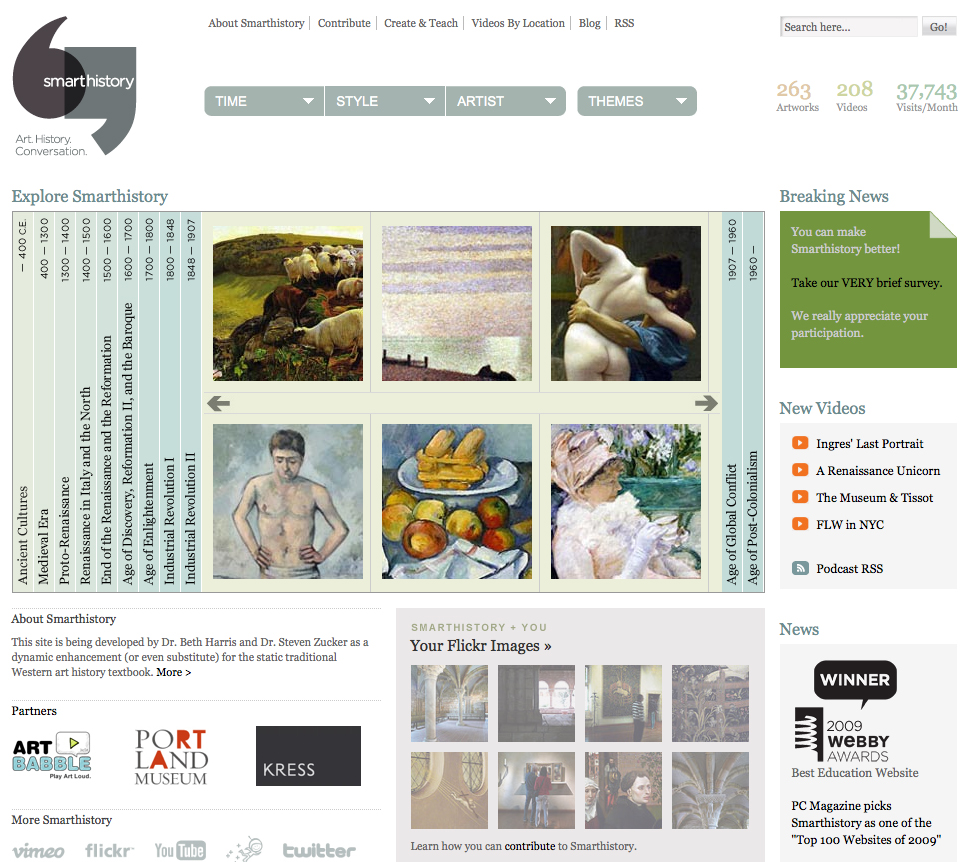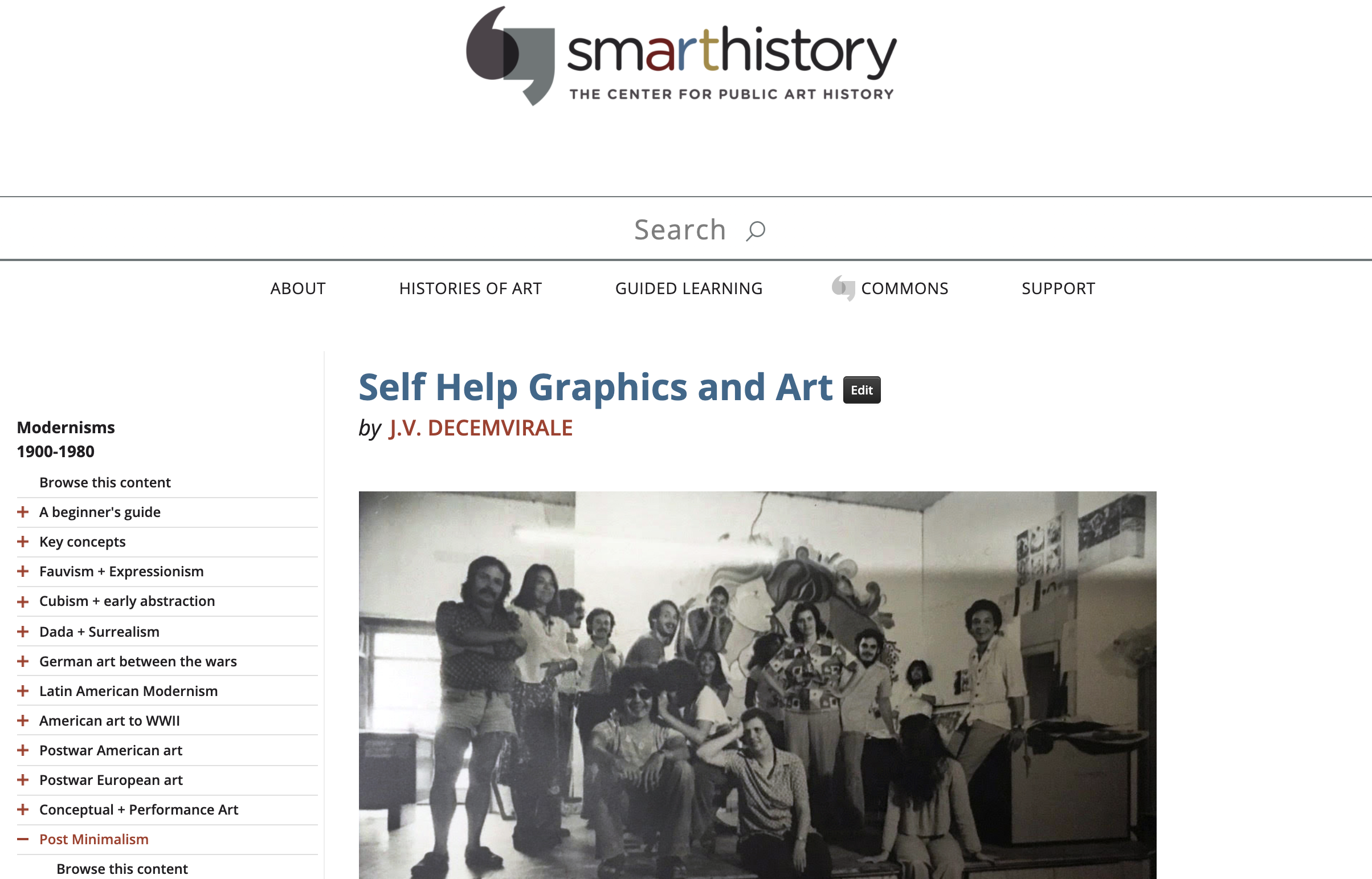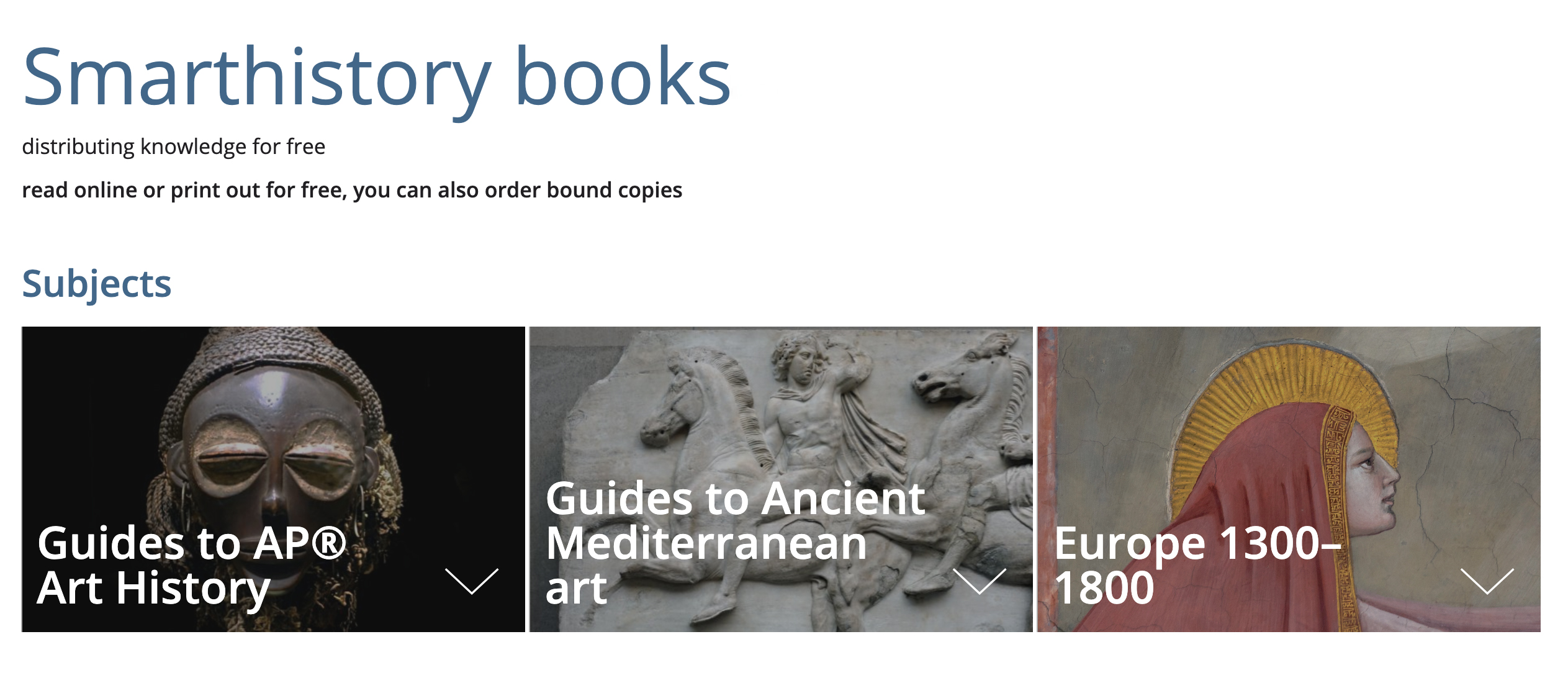Please join us at CAA
Thursday, February 11, 2021
2:00 PM – 2:30 PM
Rachel Miller, California State University, Sacramento
Evan Freeman, Smarthistory
Jeffrey A. Becker, Binghamton University – SUNY
A way forward
In the past nine months, we’ve asked in what ways the Smarthistory community can mobilize and transform to meet the needs of students and their professors during this period of crisis in education. We knew Smarthistory was having a positive impact from the dozens of emails and comments we were receiving, and our analytics showed that usage was up almost 80% year-over-year, nevertheless we wondered what else we could be doing. There are issues that are critical for our discipline to address—drawing more students to our classes, elevating the value of the discipline to society at large, centuries of violence against BIPOC and LGTBQ+ lives, the failure of our discipline to be inclusive, and the critical need to decolonize our classrooms. Smarthistory is public art history based on a radical collaborative practice that draws on the expertise of more than 500 art historians, curators, and archeologists across the globe—who together, can work to transform the discipline.
The origins of Smarthistory parallel, in some ways, the shift online that so many instructors have grappled with this past year. Beth and Steven started Smarthistory when they began to teach online in 2005, and decided then and there not to put the resources they created behind a paywall or behind the password protected wall of a learning management system. Lauren made a similar decision a few years later with her classes, opting instead to build public-facing websites for her students. So many art historians have done the same in the last months—though under far more duress. We quickly recognized that the online format allowed us the tremendous advantage of bringing multiple guest speakers into our classes, and to open our classrooms to one another. But we also recognized that the online environment was not ideal for replicating the entire in-class lecture. At four to six minutes or so, our attention lags, and being on-screen distracts from looking at the art (we are biologically wired to look at faces). We also recognized that overlaying conversational, informal audio with images replicated the best aspects of the classroom experience.
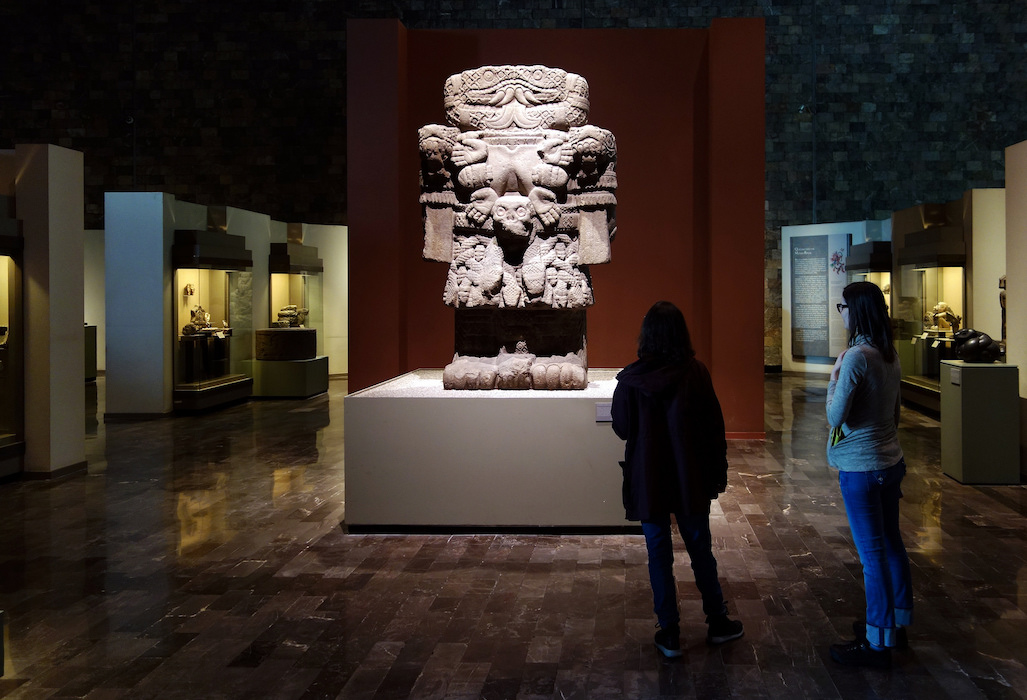
Conversation in front of Coatlicue, c. 1500, Mexica (Aztec), found on the SE edge of the Plaza Mayor/Zocalo in Mexico City, basalt, 257 cm high (National Museum of Anthropology, Mexico City, photo: Steven Zucker, CC BY-NC-SA 2.0)
In the era of YouTube, unscripted conversations (ideally in front of the work of art itself) have proved the ideal way to deliver both depth and nuance. Conversation subtly communicates the idea that art history is not monolithic, and it can capture the aesthetic experience—which, for many of us, is why we got into this field in the first place. Taking photographs onsite, whether in a gallery or a hilltop ruin, allows us to relocate the work in a world our students recognize and overcome the isolation created by the traditional isolated art history image. In person we can better model the process of close looking that we seek to teach our students. Details, too often overlooked in reproduction, are more apparent in person, and can be conveyed with the enthusiasm of a new discovery.
At its best, teaching art history is the process of leading students to discover not only the brilliant histories of art but also the relevance of those histories to their own lived experience, and so it could not be more important, we think, to get them out of the classroom and transport them, as best we can, to confront the art as directly as possible.
For all of its misery, 2020 has made the power of art evident to our students. In the wake of the murder of George Floyd, Breonna Taylor, and others, the toppling of Silent Sam, the murals painted on shuttered storefronts, and avenues painted with the words Black Lives Matter all put art at the top of everyone’s social media feeds, and has set in sharp relief our discipline’s addiction to the predominantly white, male Western European canon. Having learned the history and patronage of confederate monuments outside the classroom, students have begun to more forcefully ask, whose art is not included in our surveys?
Over the past few years we have significantly expanded our African, American, Asian, and Pacific content though we still have much more work to do. Dr. Lauren Kilroy-Ewbank is now Dean of Content and Strategy, and we have re-committed ourselves to an inclusive, public art history—one that actively seeks to include and amplify marginalized voices and to address the impact of colonialism on our discipline. In the next few months, we will be offering syllabi—and new resources—for courses on world art history and an expanded renaissance that can be adapted to suit the needs of any classroom. This fall we offered a series of “toolkit” webinars to help faculty who are looking to develop their skills in making videos, maps, audios, and more beautiful images of works of art.
Our recommendations for video production are simple,
- create content designed for the digital environment
- keep video content short (4–6 minutes)
- show details
- show the art, not the speaker
- work collaboratively
- work iteratively
So, what can Smarthistory do? One thing we know for certain is that experimenting is key. Smarthistory has always worked iteratively—we are never certain what will be successful until we try it, and in the next year or so, we will introduce a number of initiatives to see what works.
Beginning January 6, 2021 we will be offering 2021 webinar schedule designed to support the transformation of the survey class, with guest speakers offering strategies for including works of art that tell new stories of “global trade, cultural entanglements, colonization, itinerancy, empire, and gender and racial dynamics.” (Dr. Lauren Kilroy-Ewbank, Expanding the Renaissance Initiative)
To highlight resources that we hope are helpful to teachers and learners of art history we also recently created the Smarthistory Commons (new design coming soon). Here, we link to our webinars and other resources that we’ve developed to help others edit audio, take beautiful photos, and make videos. We also have resources related to teaching, such as maps that we have created, glossaries, and quizzes. Soon, the webinar “forums” will be posted here too.
In April 2020 when it became apparent that the pandemic was causing museums and colleges to shutter and research opportunities to evaporate, we reached out to funders. Thanks to them and the generosity of several board members, we are in the process of providing more than 70 one thousand dollar grants to early career art historians who were directly impacted by COVID-19 in exchange for a short, accessible essay in their area of expertise. This project significantly broadened our community of scholars but also expanded the breadth of cultures we cover with essays that range from the textiles of Dine weavers and sculptures of 16th-century Spain to the painting of Robert Colescott, the bronze of the Eastern Zhou, and the graphics of Chicana/o and Latinx Los Angeles.
We also recognize that the lack of diversity among art historians is due in part to access, a pipeline that privileges those with access to an elite education. In the past year we have begun to partner with Spelman College and the AUC Art Collaborative to offer internships to art history students. They have learned some of the key principles and tools that guide Smarthistory, and have developed their own research projects.
In an effort to ensure that the high school Advanced Placement art history course can be offered in districts that cannot afford to purchase textbooks, Smarthistory Books has published the most comprehensive set of lavishly illustrated resources tied to this curriculum, a five-volume set titled, The 250: Smarthistory Guide to the art of AP Art History. Smarthistory Books are not for sale, they are distributed by Smarthistory for free.
Accessibility to reliable, trustworthy resources has never been more important. Smarthistory.org is available to anyone with an internet connection for free. Our free Smarthistory books can hopefully help others who do not have consistent access to the Web. Textbook costs have continued to rise to exorbitant costs; even when they are financially less burdensome, it often means students can only rent a book for a short period of time. And while this has not happened yet, beginning in the year 2021 we aspire to collaborate with more experts across the globe to offer bilingual essays and videos.
We also recognize the benefit of conversation within a community—where we can discuss pedagogy, public art history, and much needed changes to the discipline. It is our hope that such a collective space can also just be a source of solace and help. Our recent Facebook group, called the Smarthistory Commons, will hopefully become a space where anyone engaged in the practice of art history (at any level) can find a sense of shared purpose—opening up art history for everyone.
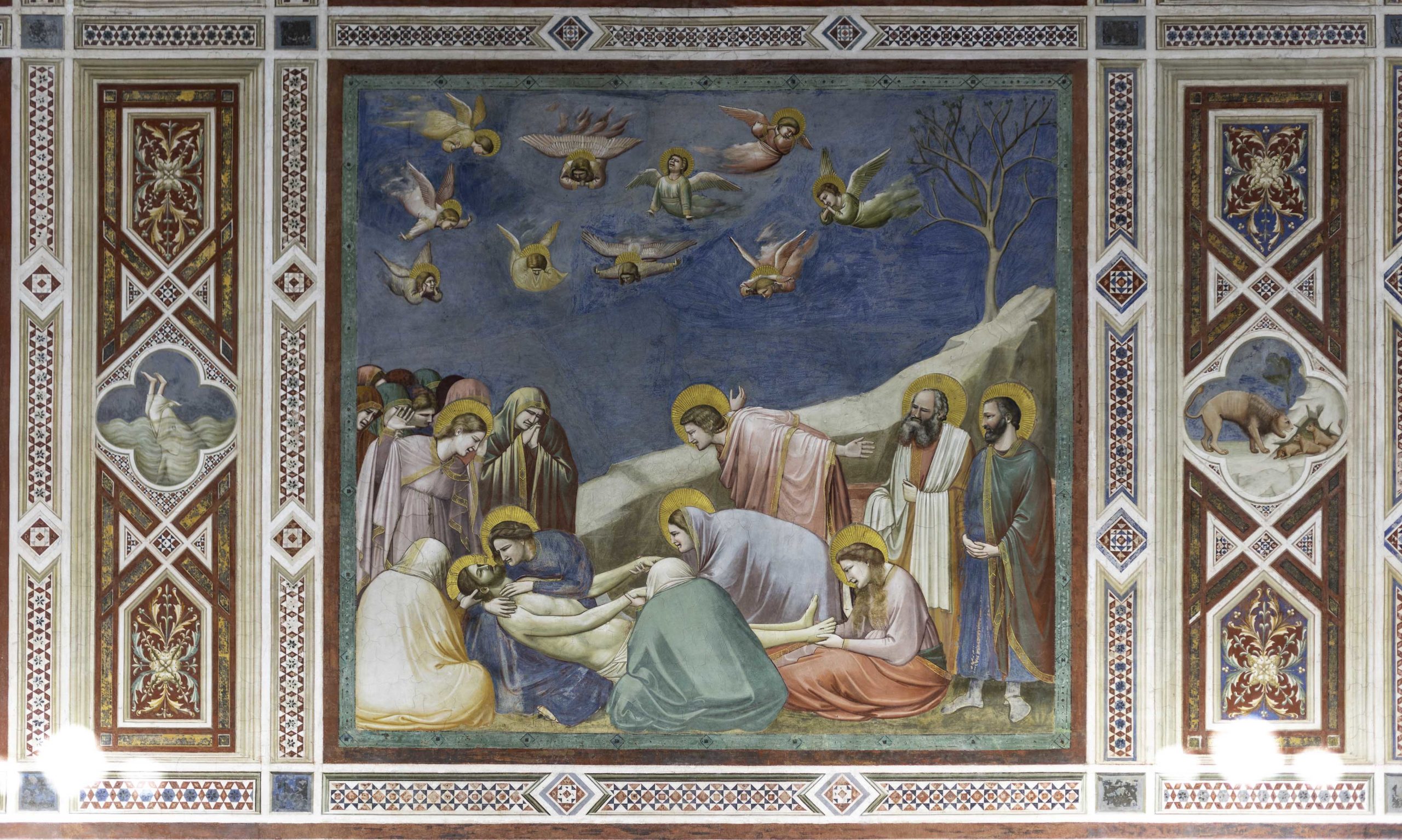
Giotto, Lamentation, Scrovegni Chapel, 1305–06, Padua, Italy (photo: Steven Zucker, CC BY-NC-SA 2.0)
Thanks to recent support from the Samuel H. Kress Foundation, our Flickr account now has more than 10,000 available images for non-commercial use in the classroom, publications, or other projects. All of these high-resolution photographs are ones that Steven has taken over the years, and they are carefully selected and photoshopped to facilitate closer looking. Every image has a full citation. Advances in photography over the past 10 years have made it clear how problematic it is to use older photographs or scans of slides to study and research art. Recently, we uploaded photographs of the Scrovegni Chapel in Padua, and we were all shocked to discover details that were never visible to us before, including the face of a grieving woman visible through her veil in the Lamentation.
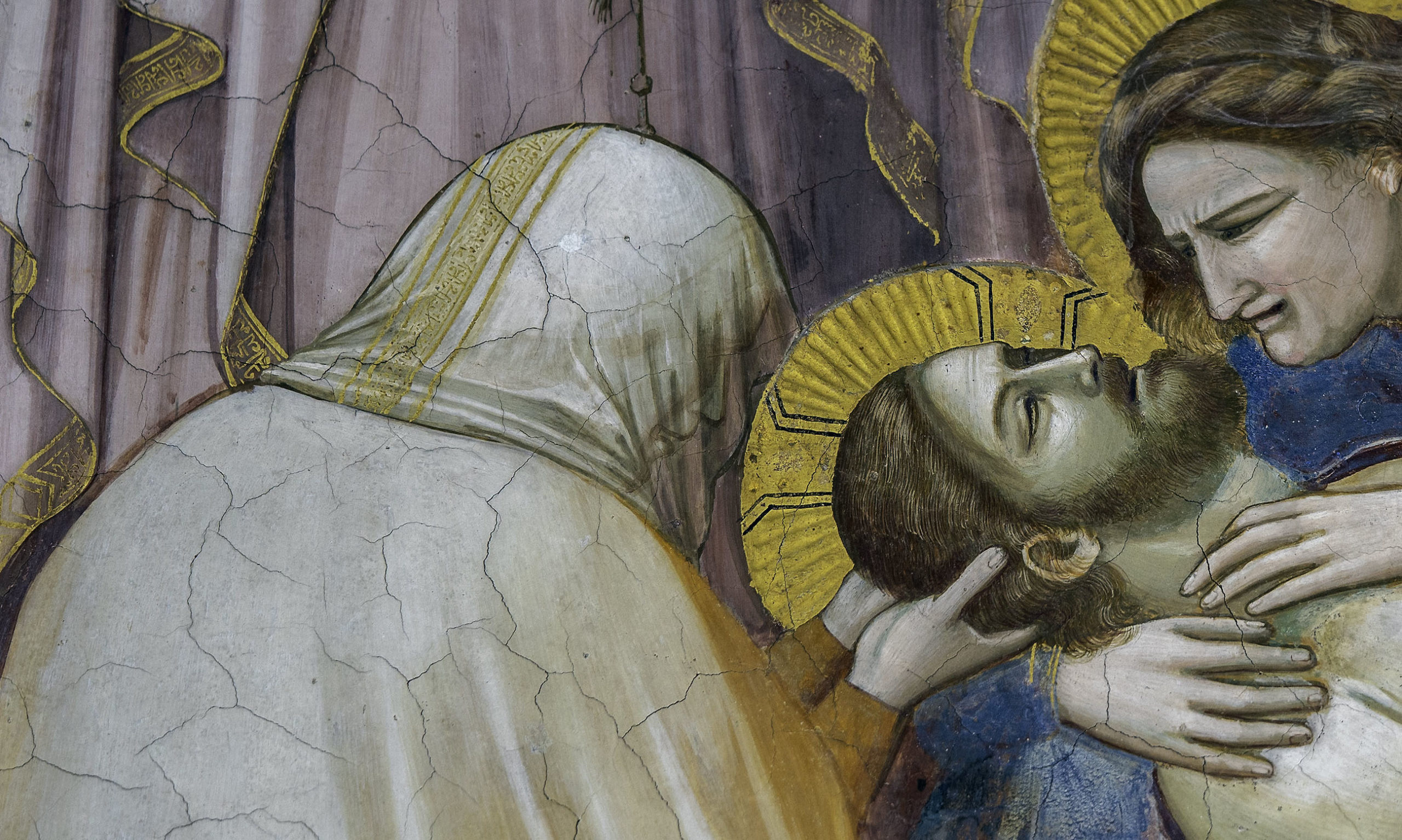
Giotto, Lamentation (detail), Scrovegni Chapel, 1305–06, Padua, Italy (photo: Steven Zucker, CC BY-NC-SA 2.0)
Smarthistory is committed to building a discipline that generously supports the specialized scholarship that has been central to art history since its inception, but we also call for an art history that brings this research to the wider public, making clear to all our discipline’s value and relevance, and ensuring that our classes remain full and our departments grow.
Our panel
We encourage everyone reading this essay to watch the recorded presentations of our panelists. Dr. Rachel Miller’s talk focuses on pedagogical strategies she has used in her classes during the COVID-19 pandemic. Rachel discusses the inherent value of having students hear different voices discuss art’s histories, and the ways in which open educational resources and teaching platforms outside the LMS energize and engage her students. Dr. Jeffrey Becker reflects on his experience teaching the art of the ancient Mediterranean and discusses the important ramifications of finding ways to dismantle the canon, to incorporate material culture into the classroom, and to harness the power of new technologies to help students experience art. Our final panelist is Dr. Evan Freeman, who argues for the value of technologies such as video and virtual reality to create more embodied experiences for learners who do not have access to objects or spaces. He describes the ways in which such embodied experiences have the power to transform how we understand and learn about art—especially in 2020, with the inability to actually visit art in person.
We hope that our live discussion at CAA on Thursday, February 11, 2021 from 11:00–11:30am (Eastern) will generate fruitful conversation about ways we can move the field forward. We also welcome questions for any of our panelists.
And, should be interested in collaborating with us, please get in touch,
lauren@smarthistory.org
beth@smarthistory.org
steven@smarthistory.org
Also, please check out the new Smarthistory Commons about how to share your expertise: https://smarthistory.org/commons/


